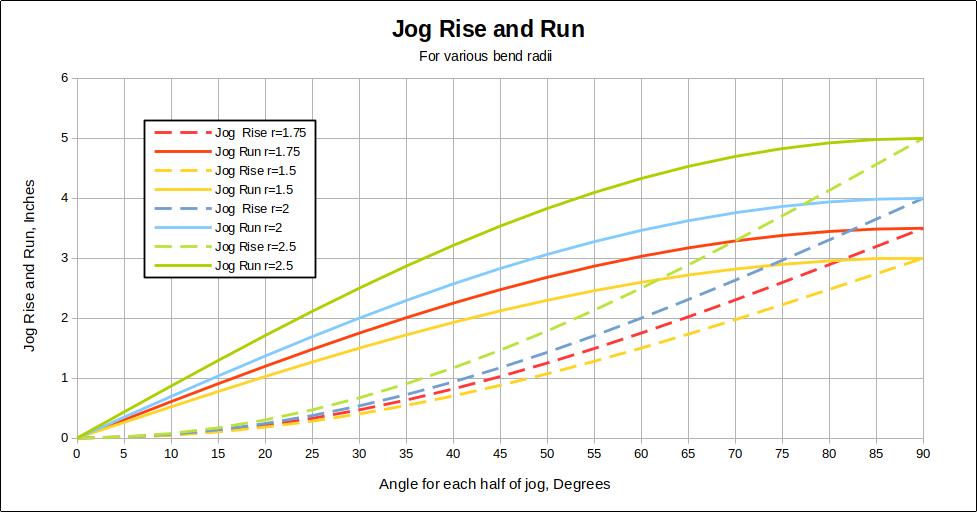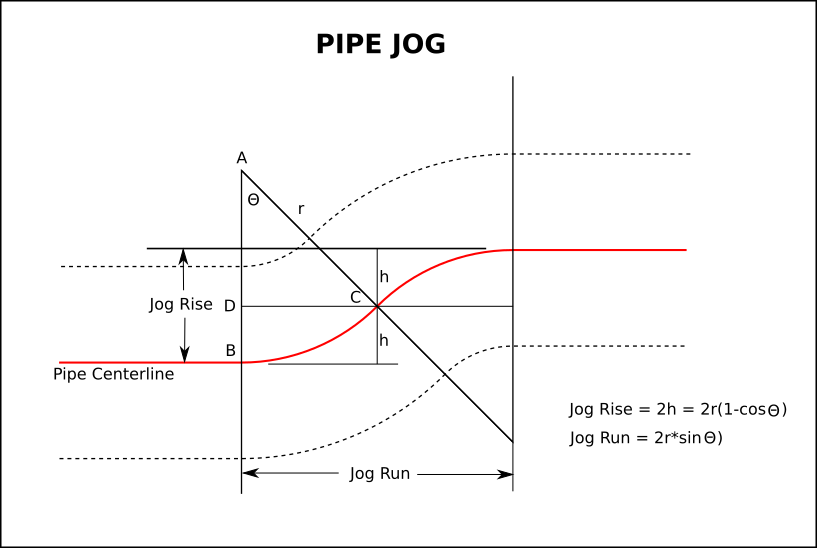That angle then can be plugged into the Jog Run formula to find the Jog Run.
Or,
if those sin and arccos things seem a little intimidating, use the
chart below. To use the chart, pick the desired Jog Rise on the
vertical axis. Follow horizontally to the dotted Jog Rise curve
corresponding to the bend radius. Then drop down to find the angle
of arc for each half of the jog. From that point, go vertically
up to the solid Jog Run line for the bend radius, then back to the left
to read the Jog Run.


